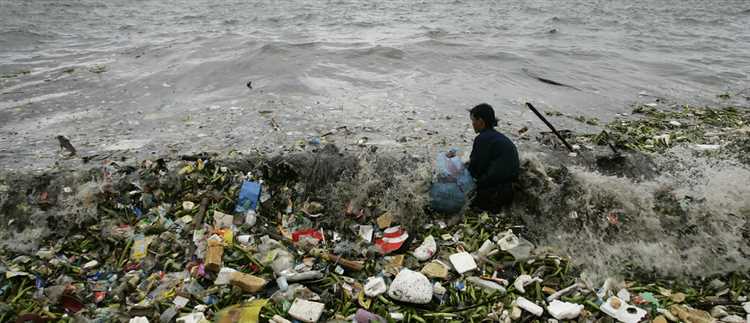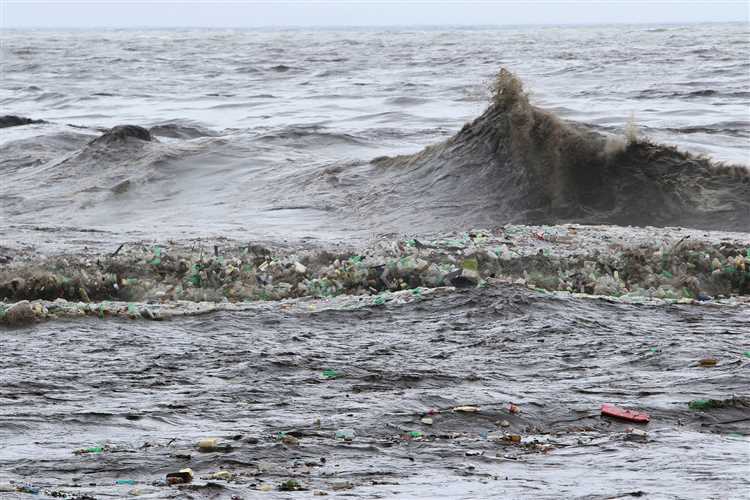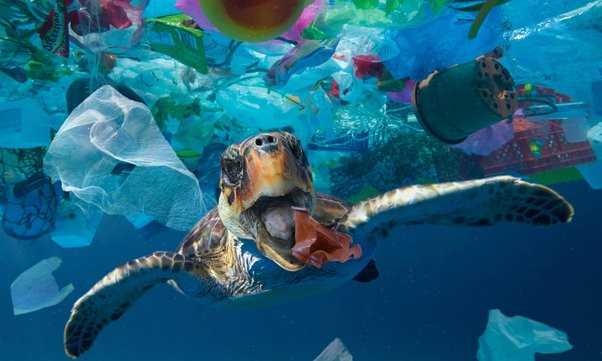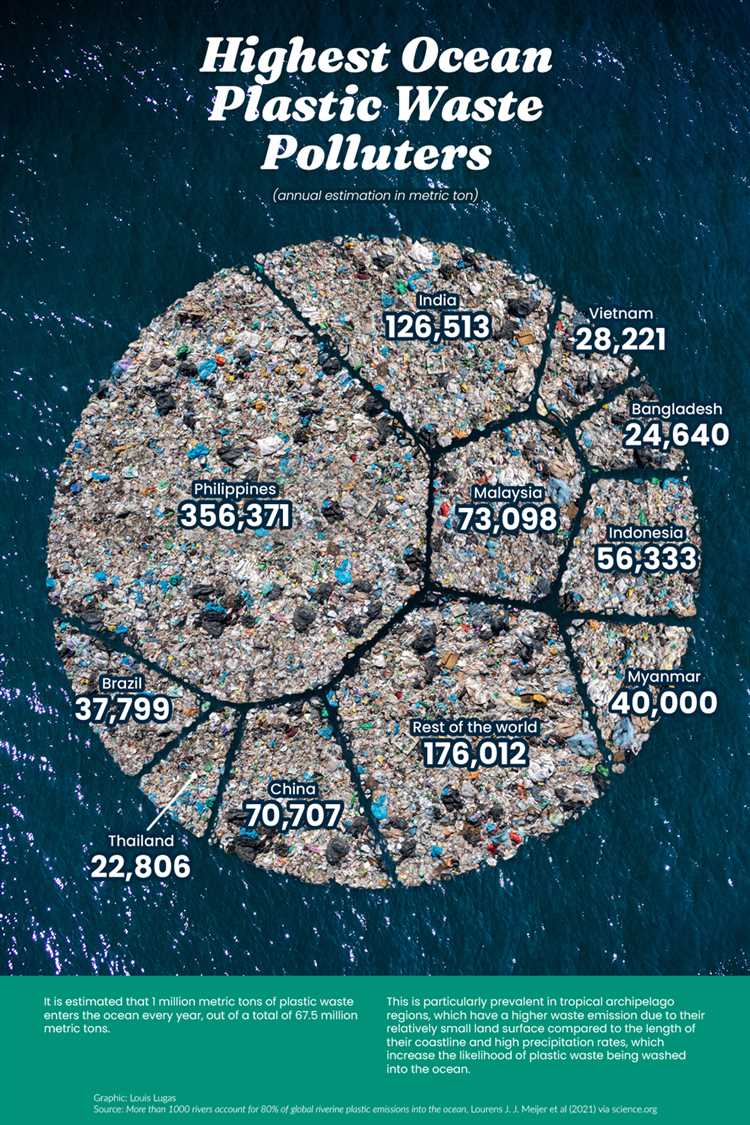The world’s oceans are a magnificent and essential part of our planet, covering more than 70% of the Earth’s surface. They are home to a rich diversity of marine life and play a crucial role in regulating the global climate. However, behind this breathtaking beauty lies a stark and alarming truth – the oceans are becoming increasingly polluted. With plastic waste, chemical contaminants, and oil spills, the question arises: which ocean is the most polluted?
The sad reality is that all the oceans are facing pollution problems to varying degrees. However, among the five major oceans – the Atlantic, Pacific, Indian, Southern, and Arctic – the one that stands out as the most polluted is the Pacific Ocean. Spanning a vast area and known as the world’s largest ocean, the Pacific Ocean is now more like a floating garbage patch, primarily composed of plastic debris.
One of the main contributors to the pollution in the Pacific Ocean is the Great Pacific Garbage Patch, often referred to as the “trash vortex.” It is a massive collection of floating plastic waste, estimated to be twice the size of Texas. The garbage patch not only poses a significant threat to marine life but also affects the entire food chain. Plastic debris is broken down into tiny pieces, ingested by fish and other marine animals, and eventually finds its way into our plates.
The pollution in the Pacific Ocean is not limited to plastic waste. Chemical contaminants, such as oil, heavy metals, and pesticides, have also contaminated the waters, endangering marine life and human health. This pollution is a result of industrial activities, oil spills, agricultural runoff, and improper waste disposal. The consequences are devastating – toxic algae blooms, dead zones, and the decline of coral reefs, to name a few.
- The Devastating Impact of Ocean Pollution
- Understanding the Global Crisis
- The Causes
- The Impacts
- Solutions
- The Main Culprits Behind the Pollution
- The Effects on Marine Life
- 1. Harm to Marine Species
- 2. Coral Bleaching
- Q&A:
- Which ocean is the most polluted?
- What factors contribute to the pollution of the Indian Ocean?
- How does pollution affect marine life in the Indian Ocean?
- What efforts are being made to address the pollution of the Indian Ocean?
The Devastating Impact of Ocean Pollution
Ocean pollution is a pressing global concern that is causing significant harm to marine life and ecosystems. The immense levels of pollution in our oceans have reached alarming levels, posing grave threats to both human and marine life.
One of the devastating impacts of ocean pollution is the destruction of coral reefs. Coral reefs are some of the most diverse and productive ecosystems on Earth, providing habitat to a variety of marine species. However, pollution from activities such as industrial waste, sewage discharge, and oil spills can lead to coral bleaching, where the coral loses its vibrant colors and becomes more susceptible to disease and death.
In addition to coral reefs, ocean pollution also affects marine organisms and their habitats. Plastic waste, for example, has become a major problem in our oceans. It not only entangles and suffocates marine animals but also leaches harmful chemicals into the water, which can disrupt marine ecosystems and poison marine life.
The devastating impacts are not limited to marine life alone. Ocean pollution also has detrimental effects on human health. Contaminated seafood, for instance, can expose humans to toxic substances such as mercury and PCBs, which can lead to various health problems including neurological damage and developmental issues.
Furthermore, ocean pollution affects the overall health and balance of the marine ecosystem. Excessive nutrient runoff, primarily from agricultural activities and wastewater discharge, can lead to harmful algal blooms. These blooms deplete oxygen levels in the water, creating “dead zones” where marine life cannot survive.
The devastating impact of ocean pollution requires collective action and efforts to address this global crisis. We need to reduce the use of single-use plastics, implement stringent regulations on industrial waste disposal, and promote sustainable practices to protect our oceans from further pollution. By taking action now, we can help mitigate the devastating impact and preserve the health and beauty of our oceans for future generations.
Understanding the Global Crisis
The global crisis of ocean pollution is an urgent issue that demands immediate attention. The alarming levels of pollution affect all the oceans around the world, posing severe threats to marine life, ecosystems, and ultimately, human health. To address this crisis, it is crucial to understand the root causes, impacts, and potential solutions.
The Causes

There are several primary causes of ocean pollution. One major contributor is plastic waste, particularly single-use plastics like bottles, bags, and straws. These items often end up in the oceans due to improper disposal and inadequate recycling systems.
In addition to plastics, various industrial activities release toxic pollutants, including oil spills, chemical runoff from agriculture, and untreated sewage. These pollutants contaminate the water, affecting the ecological balance and leading to devastating consequences for marine life.
The Impacts

The impacts of ocean pollution are far-reaching and severe. Marine animals, such as turtles, birds, and dolphins, mistake plastic debris for food, resulting in choking, intestinal blockage, and eventual death. The chemicals in pollutants accumulate in the bodies of marine organisms, causing reproductive issues, impaired immune systems, and even cancer.
Furthermore, polluted waters can harm coral reefs and seagrass beds, vital habitats for countless species. Disruptions in these ecosystems can lead to a decline in biodiversity, affecting the delicate balance of the entire marine food chain.
The human impact of ocean pollution is also significant. With contaminated seafood entering the human food chain, toxic substances pose health risks, including neurological disorders, developmental delays, and hormonal imbalances.
Solutions
Addressing the global crisis of ocean pollution requires a multi-faceted approach. Governments and industries must implement stricter regulations to reduce the use of single-use plastics, promote recycling programs, and invest in sustainable alternatives.
Efforts should also focus on preventing industrial pollutants from entering the oceans, such as improving waste management systems, implementing water treatment technologies, and enforcing stricter penalties for illegal dumping.
Individual actions also play a crucial role in tackling the crisis. Reducing personal plastic consumption, practicing proper waste disposal, and supporting organizations working towards marine conservation are effective ways to contribute to a cleaner ocean.
By understanding the causes, impacts, and potential solutions of the global crisis of ocean pollution, we can work together to preserve and protect our oceans for future generations.
The Main Culprits Behind the Pollution
There are several main culprits behind the pollution of our oceans. One of the biggest contributors is plastic waste. Plastics have become a ubiquitous part of our lives, and their improper disposal leads to millions of tons of plastic ending up in the oceans every year. From plastic bottles to food wrappers, these items take hundreds of years to break down, causing significant harm to marine life and ecosystems.
Another major culprit is industrial pollution. Industries around the world release toxic chemicals and waste into the water, contaminating the oceans and harming marine life. Chemical spills, oil leaks, and improper waste disposal are common occurrences that result in long-lasting damage to the marine environment.
Overfishing is also a significant factor in ocean pollution. Unsustainable fishing practices, such as bottom trawling and bycatch, lead to the depletion of fish populations and disrupt the balance of marine ecosystems. This not only affects the survival of marine species but also threatens the livelihoods of millions of people who depend on fishing for their income.
Agricultural runoff is another primary contributor to ocean pollution. The excessive use of fertilizers and pesticides in agriculture leads to nutrient-rich runoff entering the waterways and ultimately ending up in the oceans. This causes harmful algal blooms and leads to the deterioration of water quality, leading to the death of marine plants and animals.
Lastly, climate change and global warming are exacerbating the pollution problem. Rising temperatures and increased carbon dioxide levels in the atmosphere are causing ocean acidification, which has devastating effects on coral reefs and marine life. Additionally, melting ice caps and glaciers contribute to rising sea levels, further impacting coastal areas and increasing the risks of pollution.
Overall, it is essential to address these main culprits behind ocean pollution through better waste management, stricter regulations on industrial practices, sustainable fishing methods, and responsible agricultural practices. Only through collective efforts can we hope to reduce pollution and preserve the health of our oceans for future generations.
The Effects on Marine Life
Pollution in the world’s oceans has a significant and detrimental impact on marine life. The startling truth is that all of the world’s oceans are suffering from pollution to some degree, but some are more affected than others. Let’s take a closer look at the effects of pollution on marine life.
1. Harm to Marine Species

Pollution in the oceans often leads to the destruction of habitats and a decline in biodiversity. Many marine species rely on specific ecosystems for survival, but pollution can disrupt those ecosystems and negatively impact their populations.
For example, oil spills can coat the feathers of seabirds, making it difficult for them to fly and stay buoyant in the water. This can result in the death of these birds due to drowning or hypothermia. Similarly, pollution can contaminate the food chain, leading to the accumulation of toxins in the bodies of marine animals, which can ultimately affect the entire ecosystem.
2. Coral Bleaching

One of the most visible and devastating effects of pollution on marine life is coral bleaching. Corals are highly sensitive to changes in water temperature, pollution, and other stressors. When corals are exposed to these adverse conditions, they expel the colorful algae that live within them, resulting in a bleached appearance.
Corals play a crucial role in supporting a diverse range of marine species. When they bleach, the entire ecosystem that relies on them is put at risk. Without healthy corals, many fish, invertebrates, and other marine organisms lose their homes, causing a decline in abundance and diversity.
| Effects of Pollution on Marine Life | Examples |
|---|---|
| Harm to Marine Species | Oil spills affecting seabirds, contamination of the food chain |
| Coral Bleaching | Loss of habitat for marine species |
In conclusion, pollution in the world’s oceans has grave consequences for marine life. It is essential for governments, industries, and individuals to take immediate action to reduce pollution and protect our oceans and the diverse species that call them home.
Q&A:
Which ocean is the most polluted?
The most polluted ocean is the Indian Ocean.
What factors contribute to the pollution of the Indian Ocean?
There are several factors that contribute to the pollution of the Indian Ocean, such as industrial waste, untreated sewage, oil spills, and agricultural runoff.
How does pollution affect marine life in the Indian Ocean?
Pollution in the Indian Ocean has a devastating impact on marine life. It can lead to the death of marine animals through ingestion of toxic substances, entanglement in plastic debris, and destruction of coral reefs.
What efforts are being made to address the pollution of the Indian Ocean?
Various initiatives are being taken to address the pollution of the Indian Ocean. These include implementing stricter regulations on waste disposal, promoting sustainable fishing practices, and raising awareness about the importance of preserving the ocean’s ecosystem.